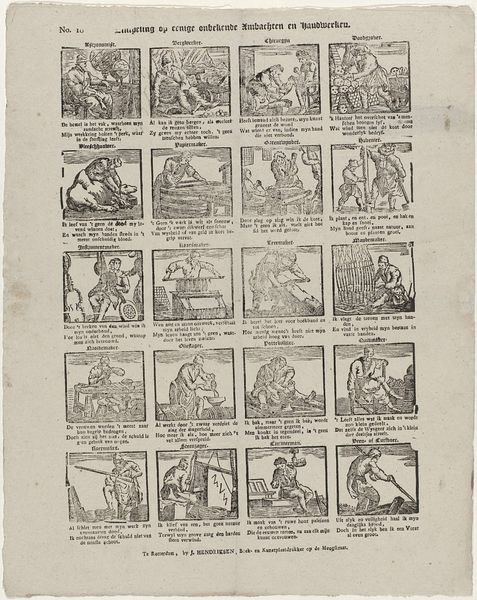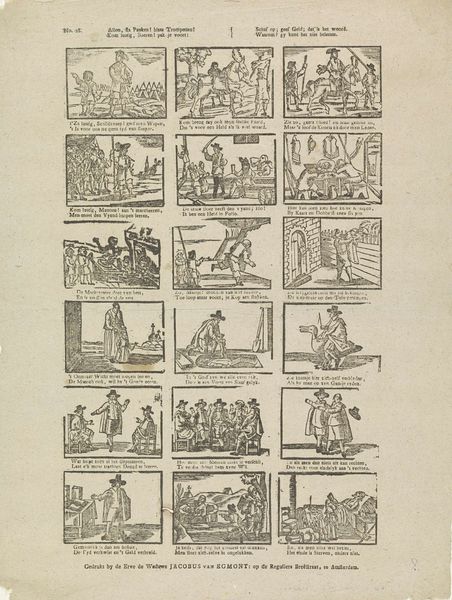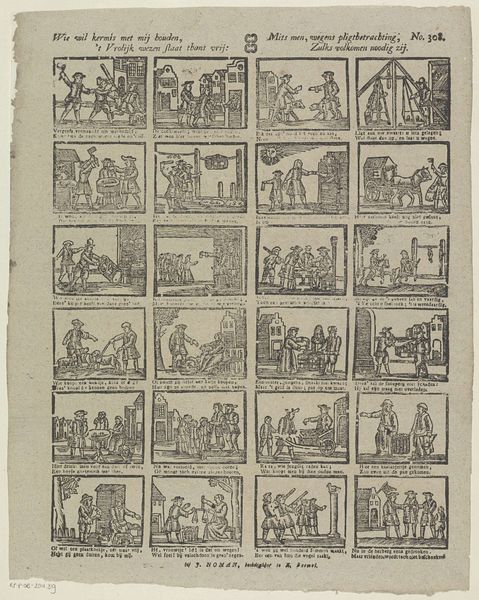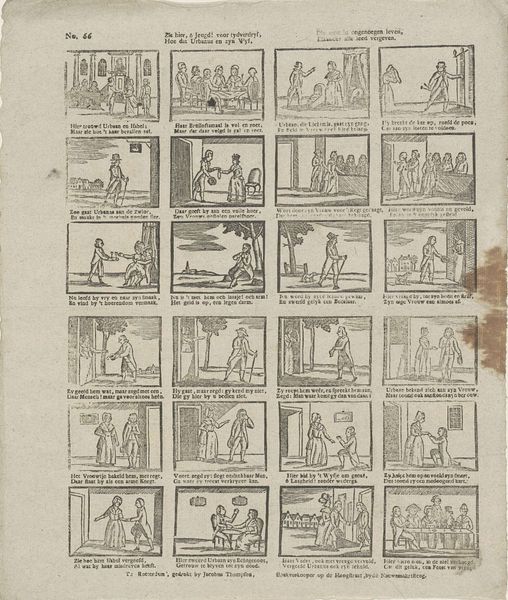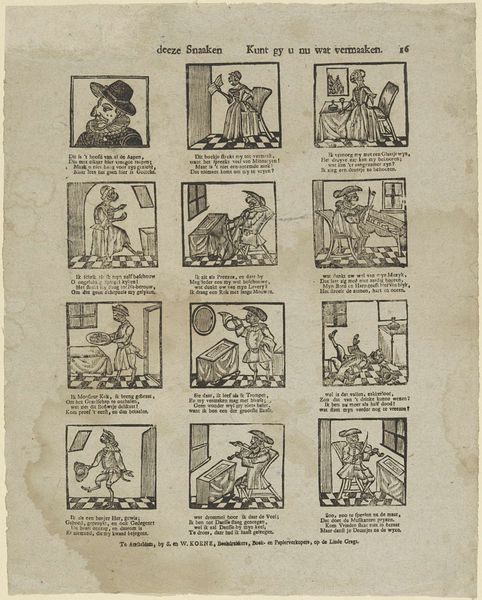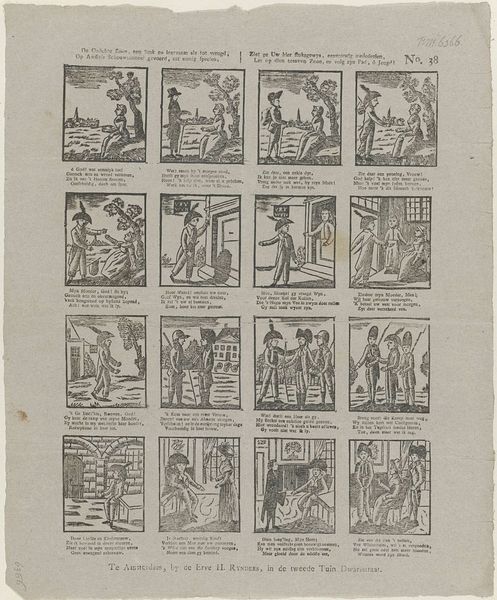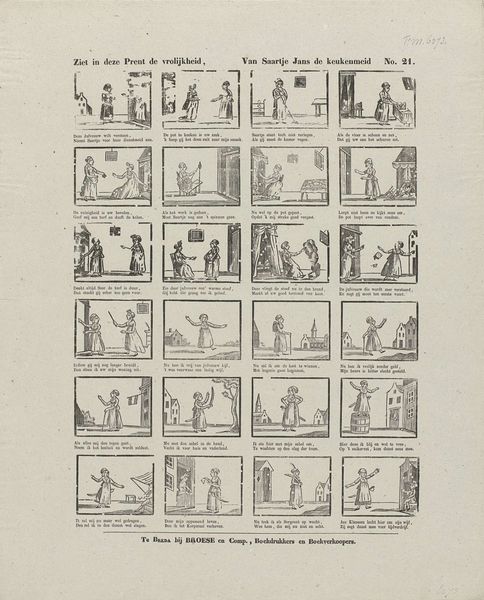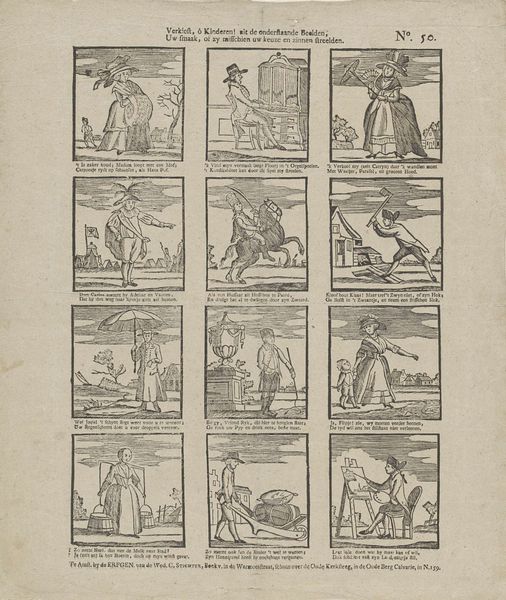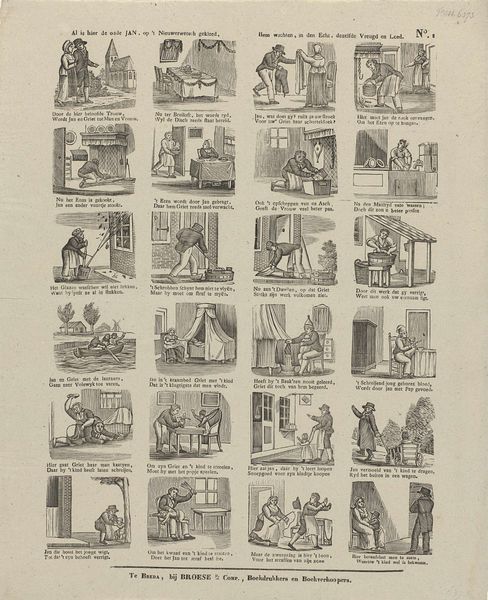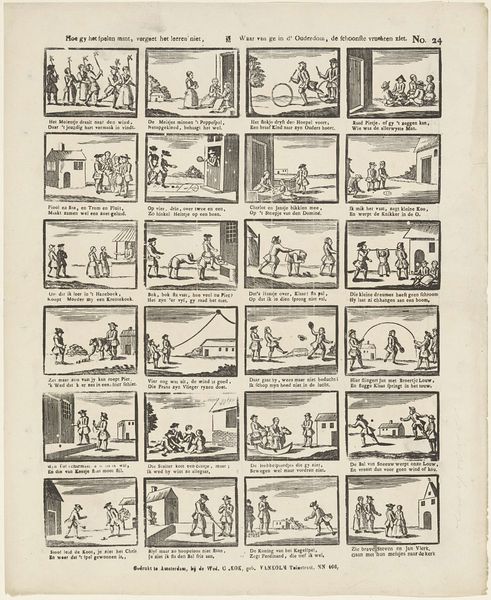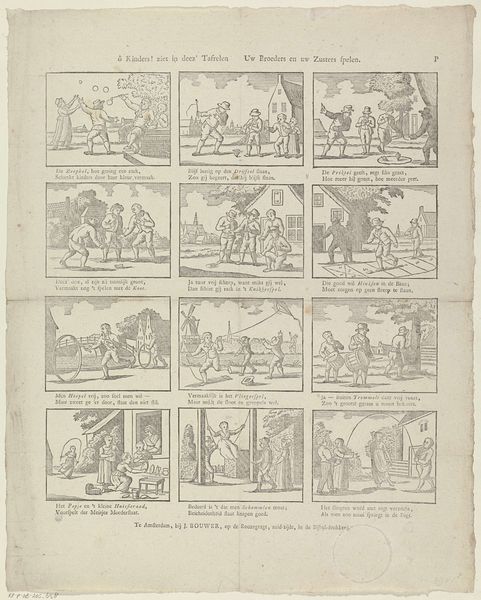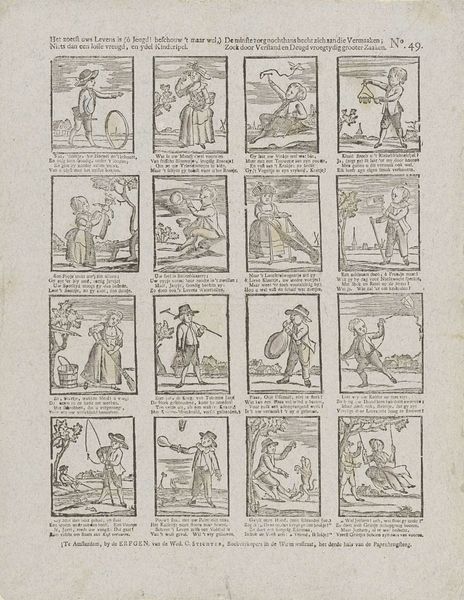
Kraaiwinkel was een fraaije stad, / Waar elk verstand en oordeel had. / En hoe het daar is toegegaan, / Toont deze prent u duid'lijk aan 1832 - 1850
0:00
0:00
ervewijsmuller
Rijksmuseum
print, engraving
#
comic strip sketch
#
quirky sketch
#
narrative-art
# print
#
caricature
#
old engraving style
#
personal sketchbook
#
idea generation sketch
#
sketchwork
#
ink drawing experimentation
#
comic
#
sketchbook drawing
#
genre-painting
#
history-painting
#
storyboard and sketchbook work
#
sketchbook art
#
engraving
Dimensions: height 439 mm, width 339 mm
Copyright: Rijks Museum: Open Domain
Editor: This is "Kraaiwinkel was een fraaije stad…", an engraving by Erve Wijsmuller, dating from sometime between 1832 and 1850. It’s like a comic strip, but with a strange, old-fashioned feel. I'm drawn to the repetitive grid structure, yet each scene is so bizarre. What symbols jump out at you in this piece? Curator: The entire sheet reads as an allegory of society. Notice how professions and social interactions are depicted through distorted lenses, a common motif to critique societal norms and values of that period. The 'Kraaiwinkel', or "crow shop," suggested by the title, implies a marketplace of folly or absurdity. Do you notice recurring visual cues that suggest this? Editor: Well, everyone seems overdressed and comically busy with tasks that appear pointless. The juxtaposition of authority figures, like soldiers, alongside everyday scenarios feels like a commentary on power. What's with the emphasis on interactions between characters that are so theatrical? Curator: Precisely! The clothing acts as a shorthand, categorizing people within the rigid hierarchies of the 19th century. However, by making these figures so caricatured, the print questions the very foundations upon which that structure rests. The performance you noticed underlines the artifice inherent within those social roles. Editor: It's clever how the artist uses simple visual language to create complex layers of meaning. Seeing those cultural symbols recontextualized provides new ways to understand Dutch society at that time. Curator: Absolutely. The artist employs humor and satire, as tools to expose human follies and societal quirks, inviting us to reflect on how those very symbols operate, even today.
Comments
No comments
Be the first to comment and join the conversation on the ultimate creative platform.
